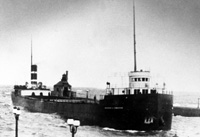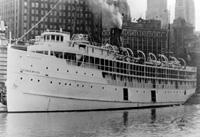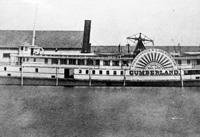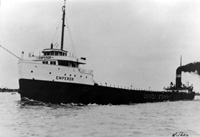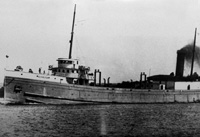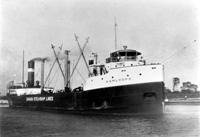Panoramic002.jpg)
Shipwrecks
Introduction
By: Arnold Alanen and Kathryn Franks
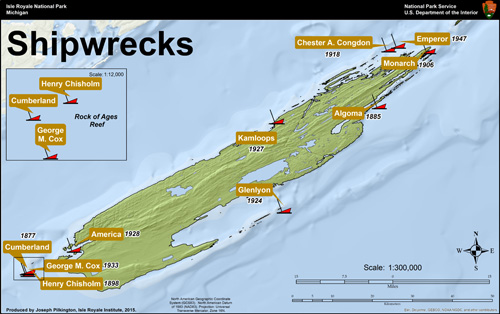
Download Map: JPEG (9.69MB) | TIFF (21.4MB) | PDF (3.63MB)
ative American copper hunters were probably the first navigators to risk the dangerous Lake Superior waters in order to travel to Isle Royale. The Indians most likely used the birch bark canoe, which was strong and versatile. During the 1600s, European-American missionaries, traders, and explorers who ventured to Isle Royale also used the canoe. The famous route just north of lsle Royale, the "Voyageurs Highway," was traveled by many canoes carrying trade goods from Mackinac or Montreal to get to Grand Portage. Between the 1770s and the 1820s, furs were transported by the Northwest Company from Grand Portage (and later, Fort William) to Sault Sainte Marie in sailing ships. It was not until 1837 when the American Fur Company opened fishing posts on Isle Royale that the first large vessels and regular boat service came to the island. The American Fur Company had fishing operations at several sites on Isle Royale, with major warehouses at Siskiwit Bay and Rock Harbor. These warehouses were visited by company-owned schooners that delivered supplies to the island, and transported fish to Sault Sainte Marie. After the Isle Royale American Fur Company fisheries closed in 1839, the island would not be frequented by large sailing ships until the first copper mining rush in 1843.
After the close of the second copper mining rush on Isle Royale in 1881, it was Canada's silver mining boom, as well as the growth of scheduled passenger and freight routes between the lower lakes and Houghton, Port Arthur, and Duluth, that created an increase in Lake Superior's, and Isle Royale's traffic. The discovery of silver in Silver Islet on the Canadian north shore initiated a rush to the area. Ships coming from the Sault Sainte Marie locks would traverse Lake Superior and "thread the needle" between Isle Royale's Passage Island and Blake Point, the most eastern point of the main island, to reach Silver Islet. Many shipwrecks occured in this three-and-a-quarter-mile strait, and as early as 1872 it had been recognized as a very hazardous passage.
There are ten shipwrecks at Isle Royale National Park that have been listed on the National Register. These include the Alogma, America, Henry Chisholm, Chester A. Congdon, George M. Cox, Cumberland, Emperor, Glenlyon, Kamloops, and the Monarch.
Shipwreck Dive Cards
Major Shipwrecks
Citations
- Franks, Kathryn E. and Arnold R. Alanen, 1999. Historic Structures at Isle Royale National Park: Historic Contexts and Associated Property Types. Department of Landscape Architecture, University of Wisconsin-Madison, January 1999.



